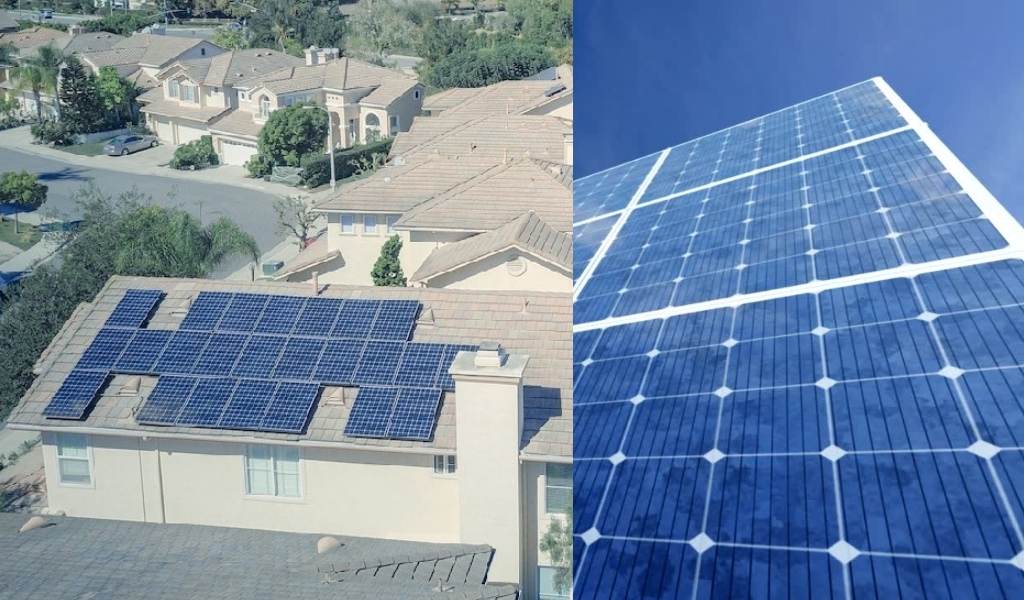Do you love the idea of benefiting from solar energy but don’t know where to start? Solar panels are an excellent investment for many households. Earlier this year, research showed that solar power provides 3% of all electricity in the US.
People install the best solar panels for a variety of reasons. Some homeowners want to lower their monthly bills, while others are concerned about the environment and are looking for ways to reduce their energy footprint.
There are several different types of solar panels on the market, and it’s necessary to do your research before choosing a particular type. This post will share an important guide to the different types of home solar panels.
Learn more about types of solar panels for houses
Passive Solar Panels
Passive solar panels use solar radiation to heat your home without using pumps or fans. The passive solar panels are less expensive than active solar panels.
They also have a longer lifespan and require less maintenance. However, passive solar panels are less efficient than active home solar panels and only work when the sun is shining, but they have a less maintenance cost.
Active Solar Panels
Active solar panels are the type most commonly used for houses. They usually make active solar panels from silicon, a perfect material for absorbing sunlight and converting it into electrical energy.
It’s made from silicon cells that convert sunlight into electricity. They’re called “active” because they need a power source, such as a battery, to work. Active solar panels are the most efficient type and can produce more electricity than passive solar panels.
Photovoltaic Solar Panels
They call it “photovoltaic” because they use the photoelectric effect to generate electricity. They made solar panels from semiconductor materials, such as silicon.
When sunlight hits a solar panel, the photons in the sunlight knock electrons loose from the atoms in the silicon. The electrons flow through the material to metal contacts on the edges of the solar panel, generating an electric current.
Photovoltaic solar panels use sunlight to create electricity. They’re made up of many small solar cells that convert sunlight into electricity. They then send the electricity to an inverter, which converts it into AC electricity that powers your home. You can mount solar panels on the roof or the ground.
Concentrated Solar Power
Concentrated solar power (CSP) systems use mirrors or lenses to concentrate the sun’s rays on a small area. The full sun’s rays heat a fluid powering a turbine. They use CSP systems to generate electricity or to provide process heat.
Cadmium Telluride Solar Panels
They‘re known for their high efficiency and low cost. They made these solar panels from a thin film of cadmium telluride (a semiconductor) deposited on a glass or metal substrate. CdTe solar cells are the world’s most efficient thin-film solar cells and are used in various solar power systems, including residential and commercial solar power systems.
Monocrystalline Solar Panels
It produced a monocrystalline solar panel from single-crystal silicon. They are the most efficient solar panel on the market, and they are also the most expensive. They are also the most durable and can withstand the elements better than any other type of solar panel.
Polycrystalline Solar Panels
They make polycrystalline panels of multiple silicon crystals and have a blue hue. It is less efficient than monocrystalline panels but less expensive. Because polycrystalline solar cells are less expensive to manufacture than single-crystal solar cells, they are the most common type of silicon solar cell used in solar panels.
Amorphous Solar Panels
It’s made from thin silicon layers and deposited onto a substrate, usually glass. Amorphous solar cells are less efficient than crystalline solar cells but are less expensive to manufacture.
They are also very lightweight and easy to install. Amorphous solar panels are a good choice for people who want to save money on their electricity bills and help the environment.
Thin-Film Panel
Thin-film solar panels are the third type of solar panel, and it’s made by depositing a very thin layer of photovoltaic material on a substrate. The most common thin-film material is copper indium gallium selenide (CIGS).
Thin-film panels are less efficient than crystalline silicon panels but have the advantage of being much lighter and more flexible. This makes them suitable for a wide range of applications.
Solar Thermal Panels
Solar thermal panels are a type of solar panel that uses the sun’s energy to generate heat. The solar thermal panels are most commonly used to heat water for domestic use, but you can also use them to heat air or other fluids. They typically use solar thermal panels in conjunction with an existing heating system, which can be a cost-effective way to reduce energy bills.
They are also used to heat air and are most commonly used in solar hot water systems.
Bifacial Solar Panels
Bifacial solar panels are a type of solar panel that can absorb light from both the front and the back. It makes them more efficient than traditional monocrystalline or polycrystalline solar panels. Bifacial solar panels are more expensive than traditional solar panels but are also more efficient. Bifacial solar panels are the way to go if you are looking for the most efficient solar panel for your home. You can use solar panel installation los angeles.
Know the Types of Solar Panels
Now that you know the types of solar panels for houses, you can decide which type is best for your home. Be sure to consult a professional to get the most accurate estimate of which system will work best when installing solar panels for your home. You can choose from passive, active, photovoltaic, and concentrated panels.
Moreover, you can also add cadmium, monocrystalline, polycrystalline, amorphous, thin-film, thermal, and bifacial solar panels to decide what type suits you. Did you find this article informative? If so, read more of our blog posts.

















